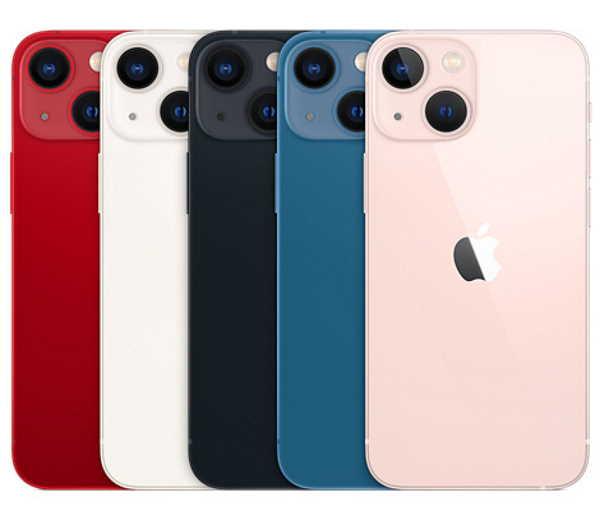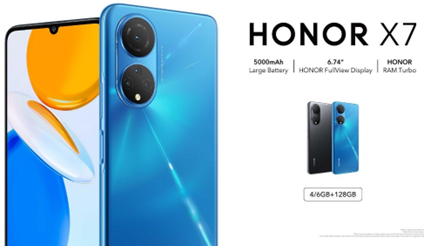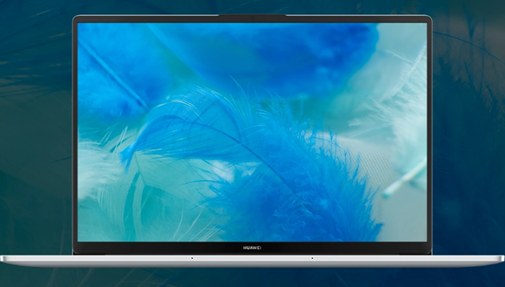The iPhone 13 Mini hasn't changed my mind about smaller phones
As phones have grown larger over the years, Apple took the opposite approach by launching another small iPhone in 2021. The $699 (£679, AU$1,199) iPhone 13 Mini is the cheapest device in Apple's iPhone 13 lineup, and it comes with a 5.4-inch screen just like last year's iPhone 12 Mini. Here's CNET's review of the iPhone 13 and 13 Mini, and our review of the iPhone 13 Pro and Pro Max.
It's still best to think of this device as a shrunken-down version of Apple's flagship iPhone. Both the iPhone 13 and iPhone 13 Mini have the same A15 Bionic processor, 5G support, MagSafe compatibility and a dual-lens camera system with new features like Cinematic mode and Photographic Styles. The major difference between both phones -- aside from size -- is battery life. The standard-sized iPhone 13 should last for an extra 2 hours compared to the iPhone 13 Mini when playing video, according to Apple.
It's great that iPhone users who prefer smaller devices won't have to sacrifice processing power or camera capabilities when opting for Apple's petite iPhone. But after years of migrating to larger screens, the iPhone 13 Mini also hasn't done much to change my mind about the relevance of a smaller phone in 2021. In fact, I'm much more excited about the idea of a cheaper, super-sized iPhone 14 Max, which Apple is rumored to release next year.
Here's a closer look at where the iPhone 13 Mini succeeds over the iPhone 13 and where it falls short.
Read more: iPhone 14 price rumors: Our best guess at how much Apple's 2022 iPhones could cost
Loved: The iPhone 13 Mini fits in small pockets and bags
The iPhone 13 Mini's shining attribute, unsurprisingly, is its pocket-friendly design. As someone who frequently crams too many items into the tiniest bag imaginable, I can certainly appreciate the iPhone 13 Mini's svelte shape.
The iPhone 13 Mini's tiny size was especially handy when going out for a run, since I try to keep my load as light as possible and only bring my keys, phone and AirPods case. Squeezing my 6.1-inch iPhone into the small waist pack I wear during my run never feels as easy as it should.
My 6.1-inch iPhone occupies most of the space in my pack, making it harder to find my keys when my run is finished. The iPhone 13 Mini, however, leaves plenty of room for other items in my waist pack, and the reduced clutter makes it easy to quickly find other belongings when I need them.
Hated: The keyboard is less comfortable (for me, at least)
This iPhone 13 Mini's smaller keyboard cuts two ways. Typing with two hands (as I normally do) feels restrictive since the keys are smaller and the phone itself isn't as wide.
But if you often type with one hand, it'll be easier to stretch your thumb across the display to reach both sides of the keyboard without having to use a second finger.

The problem, however, is that I rarely text with one hand. Whenever I pick up my phone to respond to a text or a work email, my two thumbs instinctively gravitate towards the bottom of the screen. Typing on the iPhone 13 Mini is fine, but it's always a relief to switch back to a 6.1-inch device like the iPhone 13.
Read more: These smartphones are coming in 2022, and they already look exciting
Loved: The iPhone 13 Mini's size makes it easier to hold and operate
If you often use your phone with one hand, then you'll be pleased with the iPhone 13 Mini. In addition to easier one-handed typing, the iPhone 13 Mini's smaller profile makes tasks like scrolling through Instagram and swiping between app screens more manageable with one hand.
At just 4.97 ounces, the iPhone 13 Mini is also noticeably lighter than the 6.14-ounce iPhone 13. That could make it easier to hold the Mini for long periods of time compared to the iPhone 13, especially if you often find yourself on long phone calls. Although I generally prefer having a larger screen for FaceTime chats, the iPhone 13 Mini's lighter build was definitely less of a burden on my hand during lengthy video calls.
Hated: A more cramped experience for reading, photos and FaceTime
If you're upgrading from another small iPhone (like the iPhone 8 or earlier), the iPhone 13 Mini won't feel tiny. In fact, it'll actually feel larger considering the 5.4-inch screen is more spacious than the 4.7-inch display on phones such as the iPhone 8, iPhone SE (2020) and iPhone 7. If you like the iPhone 8's compact size but would appreciate a larger screen, the iPhone 13 Mini is probably the perfect middle ground.
But coming from a 6.1-inch iPhone, the iPhone 13 Mini certainly feels constrained. Reading is more enjoyable on the iPhone 13's bigger display since characters appear larger, and the 6.1-inch screen can fit a few more lines of text compared to the Mini's 5.4-inch display. A bigger screen also means a larger viewfinder in the camera app, which I find easier for setting up my shots and cropping them afterward.
The larger screen is also more ideal for FaceTime calls. When it comes to video chatting, a bigger screen almost certainly leads to a better experience, and that definitely held true on the iPhone 13. I talk with my sister via FaceTime almost every day, and I've definitely noticed that being able to see her on a bigger screen makes the call feel more engaging. Not to mention, the iPhone 13's speakers also sound louder than the iPhone 13 Mini's, which also comes in handy for video calls.
Read more: iPhone SE 3: 6 upgrades we want in Apple's next budget smartphone
Loved: Unlocking the iPhone 13 Mini with my passcode feels faster
I've used my passcode to unlock my phone more than ever during the last year-and-a-half since I usually wear a face mask when leaving the house. If you don't have an Apple Watch, you've probably found yourself in the same position.
This is one area in which the iPhone 13 Mini's smaller size brings a major convenience. If there's ever a time in which you'll want to type quickly with one hand, this is it. The iPhone 13 Mini's thinner profile makes this a breeze since you don't have to stretch your fingers as far across the screen.
Hated: The battery life isn't as long as the iPhone 13
The iPhone 13 Mini's battery life is a big improvement over the iPhone 12 Mini, but it still doesn't last as long as the iPhone 13. In my experience, the iPhone 13 had 50% of its battery left after I had used it from 8 a.m. to around 11 p.m. The iPhone 13 Mini, by comparison, had 40% of its battery left when I had used it for the same amount of time on the previous day.
Battery life will always vary depending on how you use your device, so your results may not match mine exactly. For this reason, I tried to use both phones as similarly as possible during my time with them. On both devices, I streamed 30 minutes of music via Spotify, 20 minutes of YouTube video and participated in a 10-minute FaceTime call in addition to my other daily activities, such as checking notifications, sending texts and reading emails. The only major difference was that I also took a phone call that lasted for roughly 35 to 40 minutes on the iPhone 13.
With the iPhone 13 Mini's battery life improvements, it no longer feels like you're making a big compromise by opting for Apple's smaller phone. However, if battery life is one of the most important features you look for in a new phone, you'll definitely want to consider Apple's larger-sized options instead.
The bottom line
The iPhone 13 Mini is once again a clone of its larger sibling -- this time with improved battery life -- making it an appealing choice if you want a phone that's smaller (and a little cheaper) than Apple's flagship. However, the conveniences that come with a more compact phone aren't compelling enough for me to sacrifice a more spacious screen and longer battery life.
If making a phone that's easier to use with one hand was Apple's main goal with the iPhone 13 Mini, I would have loved to see a design that's more optimized for that experience rather than a shrunken iPhone 13. Sony's Xperia 5 II is a great example.
That phone, while considerably more expensive than the iPhone 13 Mini, has a 6.1-inch screen packed into a device with a 21:9 aspect ratio that's slightly longer but less wide than most. This approach seems like the right compromise since the Xperia 5 II's narrower build should make it easier to use with one hand while still providing the benefits of a 6.1-inch screen. In other words, I guess what I'm really asking Apple for is an iPhone 13 Slim rather than an iPhone 13 Mini.
To learn more about what's new in the iPhone 13 and 13 Mini, check out our full review.








